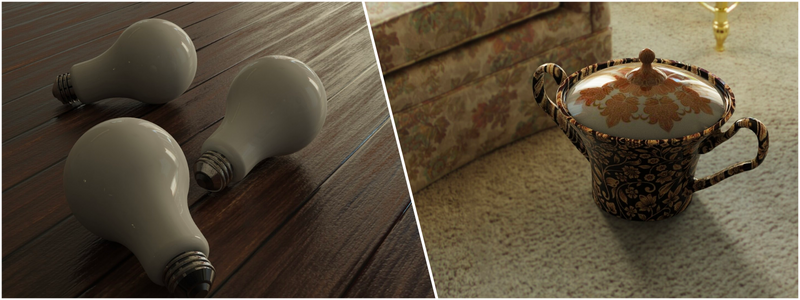A product development process will only be successful with product prototyping, especially for companies that invest in complex and large-scale manufacturing solutions. Considering the effort, time, and money spent throughout product development, the hands-on feedback acquired from industrial design prototyping is an indispensable tool for UX developers, engineers, designers, and end-users to ensure excellent functionality.
The last thing a company should do is risk committing to an industrial product design without developing a prototype. Usually, this leads to some severe and expensive problems down the road. This is why most industries use prototype design services to bring their ideas to life.
 Table of contents
Table of contents
- What is industrial design prototyping?
- The main prototypes that companies use
- Industrial design prototyping methods
- When to use industrial product prototyping
- How Cad Crowd can help
What is industrial design prototyping?
As a critical stage in the product design phase or machine design, the primary purpose of industrial design prototyping is to quickly validate the choices made for the industrial design with the project managers and consumers through prototype visualization.
With the help of prototyping, companies can showcase and prove the feasibility of their designs. All they have to do is turn their designs into prototypes that function and look almost similar to the expected finished product. The design process takes the product through a series of proof of concept phases to prepare for mass production.
Large or small, any product’s creation and design process will be complete with industrial design prototyping. Sadly, some companies push it aside or overlook it to bring their products to market faster. However, it’s important to remember that industrial design prototyping companies can enjoy and take advantage of its numerous benefits. By producing more accurate results through freelance industrial design services, you can save money and time. This is why prototyping should always be a fundamental part of any industrial design strategy, regardless of the product type.
RELATED: What are industrial design rates & costs at product design services firms?
The main prototypes that companies use
There are several development stages throughout the product design and prototyping process where different prototypes are required. Before proceeding with any product, a company should identify the specific type of prototype they need. Will it be used to demonstrate the product’s overall function? Is it for a simple visualization? Is the prototype used in preparation for final manufacturing?
During the early stages, companies should save money as much as possible and prove their new concept in the cheapest and fastest way possible. Being familiar with the four main prototypes and learning the ideal time to use them can help companies save lots of money and time. Freelance new concept design and product development services are available to assist companies during the early stages of product development.
Proof of concept
Proof of concept involves using existing components, parts, and materials to prove that a new design would work. It’s also used to make reasonable estimates regarding manufacturing costs. This proof often doesn’t leave the lab if it can only prove the basic theory of operation. A single function undergoes testing and debugging, but it’s not supposed to be a working prototype, typically hacked with duct tape and cardboard.
A proof of concept device can tell the possibility of a measurement or feature, but the acquired data might need to be more repeatable and accurate.
Visual prototype

A visual prototype presents a proposed product’s overall dimensions, shape, and appearance. However, it doesn’t include the product’s working parts. This product’s mockup is often used to present to early potential customers and investors.
Visual prototypes are typically 3D printed or made using simple materials like wood, foam, cardboard, or paper to quickly present the idea or concept in 3D form. 3D printing design services also develop prototypes that almost look real. The main objective here is to create a visual representation that will be used to acquire feedback from trustworthy people.
RELATED: 3D printing services, cost and rates for companies and firms
Working prototype
Developing a fully functional and working prototype is integral to product development and is crucial to testing, market research, trials, and pitching. It is also recommended that this prototype be developed for manufacturing. However, there are times when it might need to be wholly engineered or designed for manufacturability.
A unit to be used as a demo for a trade show might be a partial design. In addition, a working prototype may also have some areas with additional flexibility that might be subject to tweaks and changes during product design development. Teams get to test their designs with the help of working prototypes.
Pre-production prototype or factory sample
The prototype that a manufacturer provides before total production is made to guarantee and confirm manufacturability and quality. If you will be doing the manufacturing on your own or if you plan to team up with a trusted manufacturer, you will typically require this factory sample that will be used when shopping around for distribution. This is because chain stores and retail outlets want to see and touch the real thing instead of a prototype.
You’ll also want to check and confirm for any manufacturing issues with a pre-production or low-volume run, often in the hundreds. Instead of prototypes, these are usually called production samples.
Industrial design prototyping methods

The process of industrial design prototyping has come a long way. Three distinct methods of industrial design prototyping catered to the complexity, size, and timeline of the project:
Iterative prototyping
Teams often use the multistep feedback loop of iterative prototyping to deal with challenging issues with the design. This method of prototyping involves developing a prototype from the original design. It then gets tested for function and form, and the design is revised and tweaked according to feedback. A new prototype is made for further testing.
Iterative prototyping involves:
- The creation of a prototype based on the product design.
- Testing it for functionality and usability.
- Revising anything that doesn’t work.
Once the testing is finished, the research team will develop and manufacture a new prototype iteration for testing. The earlier iteration will be set aside or thrown out. Iterative prototyping is practical and allows quick identification of challenging design issues but can be wasteful and expensive depending on how much iteration is needed.
Evolutionary prototyping is a version of iterative prototyping that eliminates the need for several iterations. The central concept behind evolutionary prototyping is to slowly refine the original iteration as rooms for improvement are determined based on the incoming feedback. The first and only prototype eventually becomes the final product after comprehensive revising and machining.
Parallel prototyping
Parallel prototyping is recommended for projects that require some polishing on their way to the blueprint. This method is concept-based, where various design concepts are compared at once.
Numerous prototype designs are drafted and compared to identify the best versions before manufacturing the physical prototype. This prototyping method encourages conceptual imagination and creativity. However, parallel prototyping tends to be expensive because of the different contributing factors involved.
Competitive prototyping is one version of parallel prototyping where several design teams develop their independent concepts. Competitive prototyping is ideal for more significant projects with the potential for more risk factors.

Rapid prototyping
One of the newest methods used for product design testing is rapid prototyping. This includes several aspects and elements of the iterative process. It is a fast and accessible method for product designers with access to 3D printing technology and CAD software.
Rapid prototyping services provide state-of-the-art technologies to develop seamless data transfer from computers to printers. The method is affordable for running functionality and usability tests on newly printed mockups.
The two methods above might take several days to compare the product iterations and manufacture depending on the communication and fabrication technology requirements. It’s possible to minimize the rapid prototyping process to a daily cycle wherein the new iteration of the product is revised or designed during the day and gets printed overnight. The efficacy and availability of rapid prototyping have exponentially increased in the past few years thanks to the advancement of 3D printing design services and CAD software.
RELATED: Advantages of using rapid prototyping services for your business
When to use industrial product prototyping
Industrial prototyping of a machine or product must start sooner rather than later as a part of the industrial product prototyping design process. Starting the prototyping process early is the secret to getting the final product much faster and more confidently.
The product prototype will be developed and updated to become more detailed and concrete during creation. However, validation with real users or consumers is essential after the process when there are already sufficiently advanced prototypes.
How Cad Crowd can help
Industrial design prototyping and freelance industrial design services can help teams enjoy better collaboration, pinpoint and address issues early on, and polish existing designs. The different types and methods of industrial design prototyping are worth the extra effort and time. Contact Cad Crowd to find industrial design services and expert professionals to help you with your industrial design prototypes. Get a quote now.
